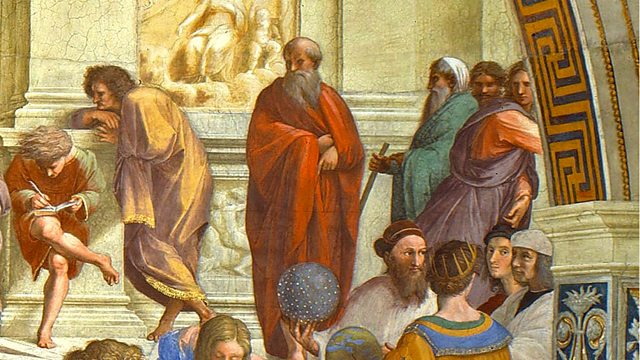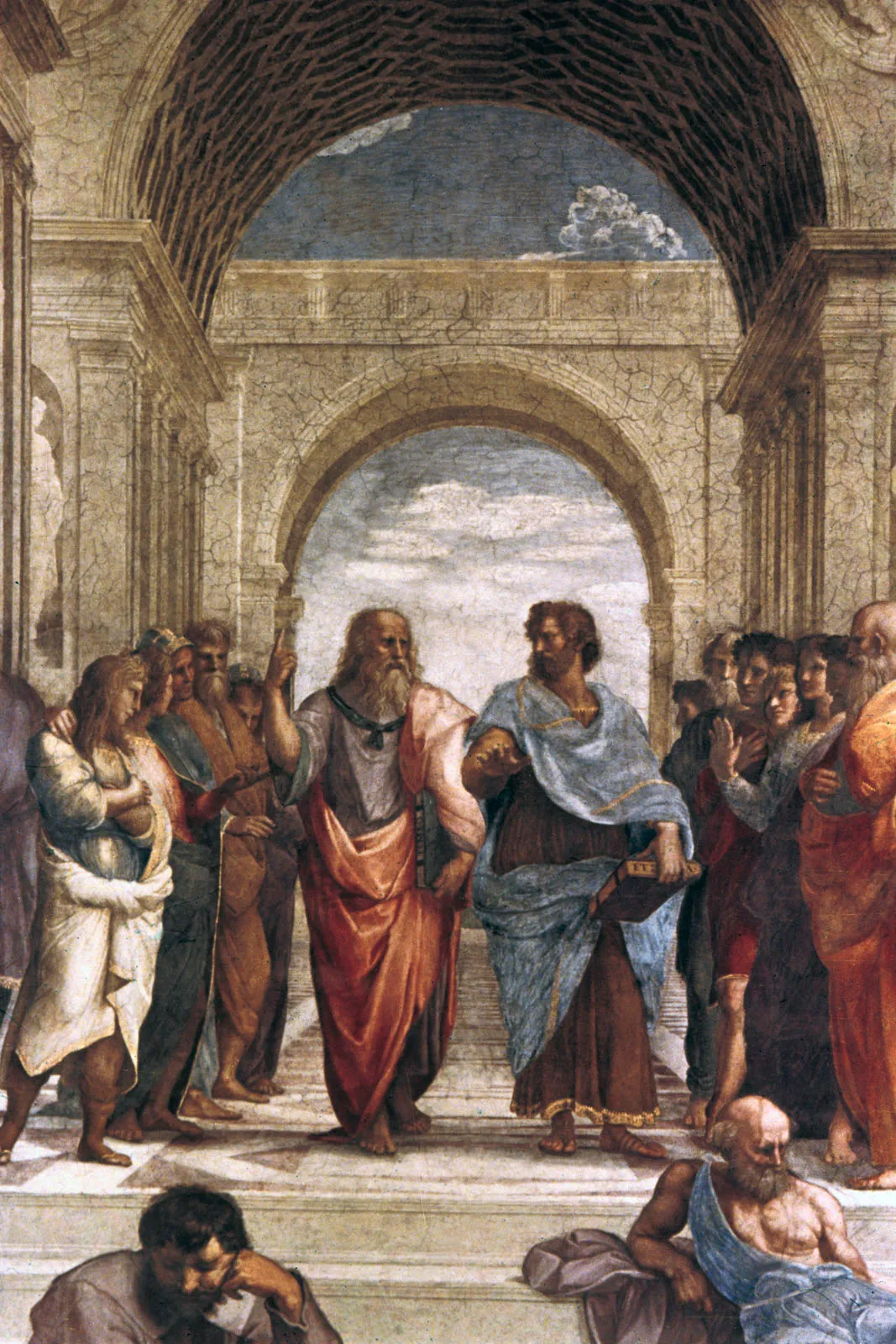The Cross stands as more than a tool of suffering; it is a symbol of the world made visible. The vertical and the horizontal meet and in their union a mystery is revealed. The ancients did not require it to be explained in scholastic detail, as they sensed that life itself unfolded upon these axes.

The Cross is the map of the cosmos and the mirror of the soul. When we speak of it through the language of philosophy, we understand that the vertical is the ascent toward the invisible, and the horizontal is the spread of form across space. Two Greek masters gave shape to these movements of thought. Plato raised his eyes upward toward the eternal; Aristotle spread his gaze outward across the natural order. When joined, they inscribe upon the soul the full figure of the Cross, which is at once wound and revelation.
I. The Vertical Axis of Plato
Plato’s doctrine is fixed upon the upward line. The world of sense is seen as shadow, as echo, as passing veil. The true homeland of the soul lies above, in the realm of the Ideas. The ascent of the prisoner from the cave is an ascent of the vertical. It is a call away from dispersion and into unity.
The Platonic soul is marked by remembrance of a higher order. Each step of learning is an act of recollection. To look up the vertical is to recall that the visible world is not ultimate but sign. The philosopher turns his whole being upward, awaiting the Light of the Good. This Light is discovered through purification and vision. The vertical is sacrifice; it requires the soul to loosen its bonds to the lower. It is the lance of desire for truth and it pierces the heart until the heart yields.
This same ascent is the signature of Spirit. It is the axis that runs from the lower world to the hidden Father. It is Jacob’s ladder and the Tree raised from root to crown. To follow Plato’s vertical is to let the soul stand as flame, never satisfied with what lies in the dust.
II. The Horizontal Axis of Aristotle
Aristotle brought his thought to the line that stretches across. Where Plato ascended, Aristotle measured. He did not deny the real but embraced it. He took the manifold forms of nature, the living, the moving, and the breathing, and sought their causes. His philosophy is horizontal because it extends into the breadth of the created order. The horizontal is the place where difference unfolds.
The Aristotelian gaze is upon substance, movement, and relation. It is the soil where categories root themselves. Form and matter, potential and act, cause and effect – all lie across the breadth of the horizontal. He binds knowledge to the senses and to the intellect that interprets them. The horizontal does not lift the soul away from the body, but teaches it to discern the structure of the body and of the world that surrounds it.
Aristotle gives the cross-beam of the world its dignity. Without him, the vertical would pierce an empty sky and leave the earth in silence. His method holds the manifold together. The horizontal reveals that the Divine is reflected in the multiplicity of things, in the ordered dance of change. To embrace the horizontal is to honour the world as a vessel of meaning.
III. The Union in the Cross
When the vertical of Plato meets the horizontal of Aristotle, the Cross reveals its mystery. Spirit pierces downward and upward at once, whereas form stretches outward into the world. The Cross is not pure ascent, nor pure extension, but the wound where they meet. That wound is the centre, the Rose.
At the centre of the Cross, the soul learns that ascent without extension would deny the world, whilst extension without ascent would imprison the world within itself. The Rose blooms only where both axes cross. The Platonic soul, seeking the eternal, must enter also into the Aristotelian breadth of form. The Aristotelian gaze, examining the manifold, must allow itself to be pierced by Platonic light. Without union, the vertical withers in abstraction and the horizontal hardens in materialism. With union, the Cross holds the secret of incarnation: the Idea becomes flesh, and the world of flesh remembers its Idea.
The Cross was never mere instrument of death but the cosmic pattern of reconciliation. The vertical is the Logos descending into the world; the horizontal is the cosmos opening itself to receive. Their meeting is the sacrifice that brings forth life. It is the place where philosophy becomes liturgy.
Fiat Lux.
